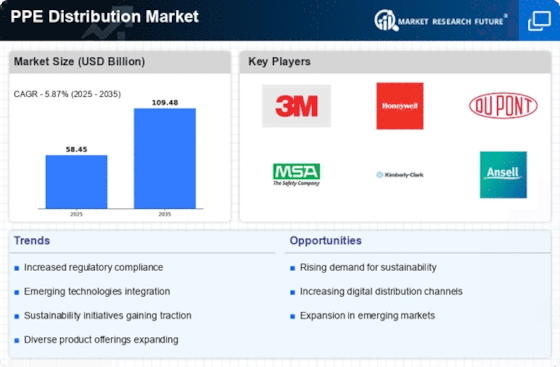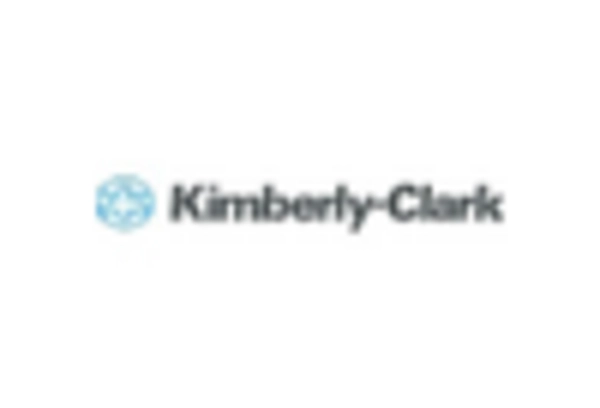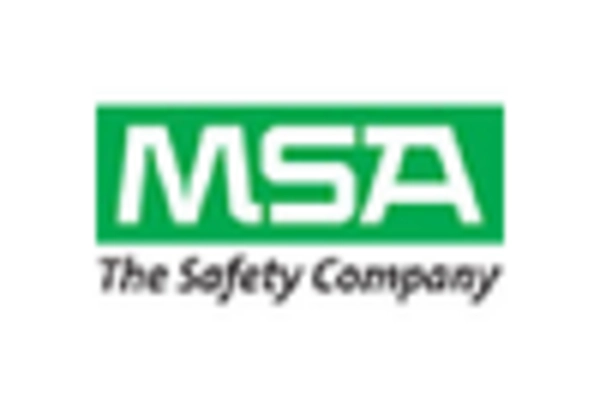Technological Innovations in PPE
Technological advancements are reshaping the PPE Distribution Market, introducing innovative products that enhance safety and comfort. The integration of smart technologies, such as IoT-enabled PPE, is gaining traction, allowing for real-time monitoring of safety conditions. This trend is expected to drive market growth, with projections indicating a compound annual growth rate of 8% over the next few years. As organizations seek to leverage these innovations, the demand for efficient distribution networks that can deliver cutting-edge PPE solutions is likely to increase, thereby transforming the landscape of the industry.
Expansion of E-commerce Platforms
The PPE Distribution Market is witnessing a transformation due to the expansion of e-commerce platforms. The convenience of online purchasing has made it easier for businesses and individuals to access a wide range of PPE products. This shift is particularly evident in sectors where traditional distribution methods were previously dominant. E-commerce is projected to account for a significant portion of PPE sales, with estimates suggesting that online sales could represent over 30% of the market by 2025. As a result, companies are adapting their distribution strategies to include robust online channels, enhancing accessibility and efficiency in the PPE market.
Increased Workplace Safety Regulations
The PPE Distribution Market is experiencing a surge in demand due to heightened workplace safety regulations. Governments and regulatory bodies are increasingly mandating the use of personal protective equipment across various sectors, including construction, manufacturing, and healthcare. This regulatory environment compels organizations to invest in PPE to ensure compliance and safeguard employee health. For instance, the introduction of stricter guidelines has led to a projected growth rate of approximately 7% in the PPE market over the next five years. As companies strive to meet these regulations, the demand for reliable PPE distribution channels becomes paramount, driving innovation and efficiency within the industry.
Rising Awareness of Occupational Hazards
The PPE Distribution Market is significantly influenced by the growing awareness of occupational hazards among workers and employers alike. As industries evolve, there is an increasing recognition of the risks associated with various job roles, prompting a proactive approach to safety. This heightened awareness is reflected in the rising investments in PPE, with estimates suggesting that the market could reach a valuation of USD 60 billion by 2026. Companies are now prioritizing employee safety, leading to a robust demand for effective PPE distribution solutions that ensure timely access to necessary equipment, thereby enhancing workplace safety standards.
Focus on Sustainability in PPE Production
The PPE Distribution Market is increasingly influenced by a focus on sustainability in production processes. As environmental concerns gain prominence, manufacturers are exploring eco-friendly materials and practices in PPE production. This shift not only addresses consumer demand for sustainable products but also aligns with regulatory pressures for greener practices. The market for sustainable PPE is expected to grow, with projections indicating a potential increase in market share of up to 20% by 2027. Consequently, the distribution of sustainable PPE is becoming a critical component of the industry, as companies seek to meet both safety and environmental standards.

















Leave a Comment